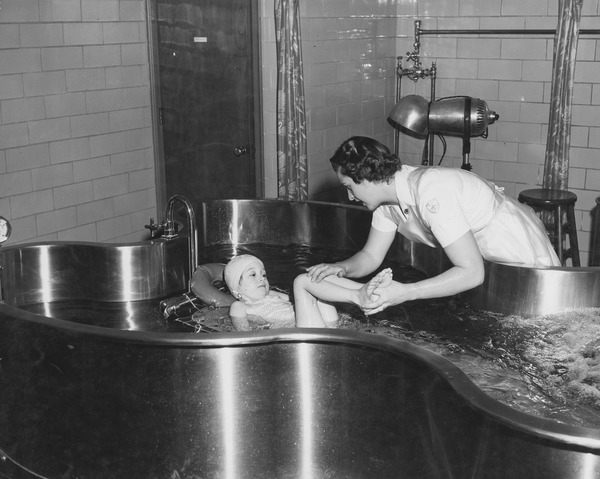Exposing patients to baths or showers of warm water for an extended period of time often had a calming effect. For this reason, mental hospitals used hydrotherapy as a tool for treating mental illness. Water was an effective treatment because it could be heated or cooled to different temperatures, which, when applied to the skin, could produce various reactions throughout the rest of the body.
One of the main benefits of hydrotherapy treatment in the tank was its ability to take effect quickly. Warm continuous baths were used to treat patients suffering from insomnia, those considered to be suicidal and assaultive, and calmed excited and agitated behaviour. A patient could expect a continuous bath treatment to last from several hours to several days, or sometimes even over night. Continuous baths were the most effective when held in a quiet room with little light and audio stimulation, thus allowing the patient to relax and possibly even fall asleep.
The Butterfly or Flender (named after the manufacturer) hydrotherapy tank pictured above was first designed and installed at the New York Post-Graduate Hospital in 1935. The tubs were mainly found in spa facilities, sanatoriums and bathing departments of larger hospitals.
Originally intended only for underwater rehabilitation of osteoarthritic patients, its unique shape provided ready access for the therapist to the patient’s trunk and extremities. It had thermostatically controlled water temperature, turbines adjustable on a track for hydromassage and an overhead hoist to simplify the handling of physically-challenged patients. The butterfly tub could also be equipped and used for electro-galvanic baths.
Description provided by César Sá of Portugal and Tobias Langohr of Germany

